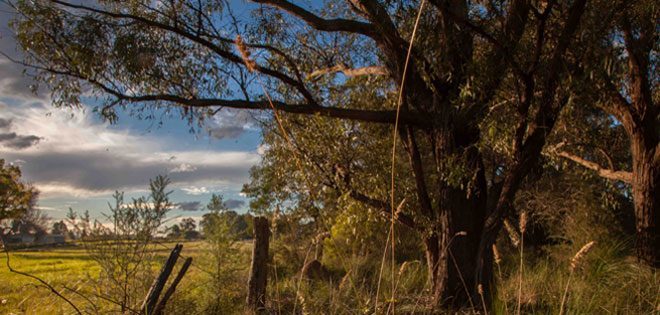The Australian Association of Bush Regenerators was established in 1986, out of concern for the continuing survival and integrity of bushland and its dependent fauna. Our aim is to promote the study and practice of ecological restoration, and foster and encourage effective management of natural areas by qualified people, based on sound ecological principles. We seek new members and friends to help promote good work practices in natural areas, strengthen our industry, and network with like-minded people.
The activities of AABR and its members are motivated by a deep sense of respect and awe for the complexity, intrinsic values and beauty of locally adapted ecosystems, many of which persist and flourish in every location of the globe. Such ecosystems represent aeons of evolutionary input and encompass living components (plants, animals, microorganisms) as well as non-living components (soils, water and climate) and their interactions. This motivation translates as a desire to see such ecosystems conserved in perpetuity – and brought back to health when they are degraded by human impacts.
AABR is an association incorporated under the Associations Incorporation Act 1984 NSW. It is managed by committee of volunteers, and supports over 1000 members and another thousand subscribers from all over Australia.
Our Vision
Vibrant, healthy, sustainable ecosystems across Australia that support our continent’s native ecosystems and peoples.
Our Mission
AABR fosters healthy environments by supporting communities, professionals and governments to more effectively protect, repair and manage Australia’s native bushland & biodiversity.
Our Purpose and Objects
The Australian Association of Bush Regenerators is established as an incorporated not-for-profit with a purpose of protecting and enhancing the natural environment of Australia, by promoting, developing, and fostering the ecologically sound management and repair of ecosystems.
The objects of AABR align with our purpose and include:
Advocating for the appropriate management of Australian ecosystems by:
- engaging with communities (including First Nations) and all levels of government to promote the sound ecological management and repair of natural areas.
- promoting and advancing the study and practice of ecological restoration, particularly emphasising the role of assisted natural regeneration (bush regeneration)
- encouraging land managers to develop and implement ecologically based policies, strategies, programs and plans of management.
- fostering education, research, and any other means of advancing knowledge in bush regeneration and any aspects of ecological restoration.
- demonstrating publicly the contribution of ecological restoration and bush regeneration to the continuing benefit of natural areas and human welfare.
- working cooperatively with other organisations with related aims on specific issues.
Engaging in education, communication, and dissemination of information to build capacity of land managers to appropriately manage the natural environment of Australia by:
- instituting and promoting lectures, seminars, symposia, and demonstrations on pertinent subjects and providing a forum for the discussion and dissemination of information about ecological restoration.
- printing or publishing any periodicals, books, papers, videos, and online materials for the promotion of AABR’s objectives.
Promoting and facilitating appropriate training and skill of all people and organisations engaging in management of the natural environment of Australia by:
- promoting, establishing, and maintaining a suitable standard of practice by both volunteer and paid practitioners, managers and planners engaged in the ecological restoration and management of natural areas.
- establishing and implementing an accreditation system for bush regeneration practitioners and, where needed, practitioners of other ecological restoration activities.
- developing and promoting training resources pertaining to the practice of restoration.
- fostering equitable working conditions and recognition of the skills and status of ecological restoration practitioners and bush regenerators.
AABR has relationships with a variety of like-minded organisation and external committees, such as:
- Restoration Decade Alliance is a consortium of 14 of Australia’s peak environmental restoration organisations working together to galvanise action by all sectors of society to put their weight behind the UN Decade on Ecosystem Restoration, as it is not extreme to say that it may be our last chance to make a real difference to nature conservation. The Darwin Agreement outlines the collaboration.
- SER Australasia as a partner to collaborate on revisions to and promotion of the National Standards for the Practice of Ecological Restoration in Australia
- Australian Network for Plant Conservation – as a partner in ANPC’s Healthy Seeds program to improve appropriate native seed production and supply to restoration projects and revise the Florabank Guidelines.
- Ecological Society of Australia by providing AABR members with affiliate membership of ESA
- Greening Australia as a member of Project Phoenix External Technical Committee
- Landcare – by developing relationships with both Landcare Australia Ltd and the National Landcare Network
- Nature Conservation Council (NSW) providing representatives on the Bush Fire Advisory Committee and NSW Roadside Environment Committee
- Places You Love Alliance which advocates for stronger legal protection of natural areas
- NSW Environmental Trust Technical Review Committee for Restoration and Rehabilitation Grants Program – Government and Community. AABR provided representatives on the committee.
- Planet Ark – AABR has had a relationship with Planet Ark for many years, particularly with respect to providing alternative bush regeneration activities for National Tree Day (NTD).
- Great Eastern Ranges Initiative – In late Jan 2020 AABR and Great Eastern Ranges Initiative created an informal network of around 20 environmental NGOs working in the post fire space
- Representation to the Australian Industry and Skills Committee (AISC). Amenity Horticulture, Landscaping, Conservation & Land Management Industry Advisory Committee. AABR has representatives on the National, NSW and Victoria Committees.
Constitution
The Constitution was first registered in 1986 on the incorporation of AABR.
Major revisions have been undertaken
- In 2013 to reflect new membership options and the national entity
- In 2017 two new clauses were included to cover the association operating as a non-profit and a winding up clause.
- In 2021 to meet the requirements of national registration as a charity and for gaining Deductible Gift Recipient status through the ATO – as well as to better reflect our national structure.
AABR’s Constitution


Leave A Comment